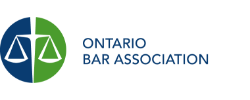In a system built on the principle of fairness, equal access to justice remains intangible for many. For marginalized communities in Canada, particularly those facing poverty, language barriers, racial discrimination, or limited legal knowledge, navigating the criminal justice system can feel like stepping into a maze without a map.
While much attention is paid to high-profile cases and legislative changes, the often-overlooked reality is that many individuals never make it to trial with adequate legal support or do not know where to begin when they do. This article offers practical, accessible resources and pathways for navigating the criminal justice system, with a focus on how legal professionals, law students, and institutions can help close the gap.
1. Legal Aid Is Not Gone, But It’s Under Pressure
Legal Aid Ontario (LAO) is an essential resource for many low-income individuals, providing representation for criminal charges, bail hearings, and appeals. However, public perception, particularly after funding cuts in recent years, suggests it is either unavailable or inaccessible.
What can help:
- Awareness campaigns within communities about eligibility criteria and application procedures.
- Partnerships between law schools and community centres to assist with Legal Aid applications.
- Advocacy for sustained funding to keep Legal Aid viable and responsive.
2. Pro Bono Programs and Community Legal Clinics
Many do not realize there are community-based legal clinics and pro bono services designed specifically to support people who do not qualify for Legal Aid but still cannot afford private counsel.
Key Examples include:
- Pro Bono Ontario - Offers helplines and legal support for underserved individuals.
- Downtown Legal Services (Toronto) - Run by University of Toronto law students under the supervision of lawyers.
- Specialized Clinics - Focusing on racialized groups, refugees, or women in conflict with the law.
Tip: Legal organizations should consider creating a centralized online directory of community clinics, organized by region and area of law, as current information is often difficult to access.
3. Know-Your-Rights Tools Are a Game Changer, If People Can Find Them
A significant barrier is not just lack of access to lawyers, but also a lack of awareness of basic rights. Many accused persons speak to police without understanding the implications or miss court dates because they do not understand the implications of not attending.
Solutions that work:
- Pocket guides and flyers distributed in shelters, schools, and libraries outlining basic rights upon arrest or detention.
- Multilingual educational videos outlining the criminal process, from arrest to trial.
- Workshops hosted by law students and community advocates, explaining common court procedures.
4. Court Support Workers Make the System Human
For first-time accused individuals, especially youth, refugees, or people with disabilities, stepping into a courthouse can be traumatic. Court support workers, while often underfunded, act as a vital bridge between the system and the individual.
Why it matters:
- These workers often help clients understand court documents, organize transportation, and prepare emotionally for court dates.
- Some programs, like Elizabeth Fry Societies and John Howard Societies, offer holistic support that combines legal and social assistance.
Law students could support these efforts by volunteering with such organizations and even helping build resource toolkits tailored to specific needs.
5. Technology Should Help, Not Hinder
The pandemic brought a shift toward remote court appearances and online filings, but many marginalized individuals lack internet access, devices, or digital literacy. This digital divide can create even more isolation from the justice system.
Moving forward, we need:
- Public internet access points at libraries, shelters, and clinics with privacy-safe options for court access.
- Training sessions for clients on how to attend virtual hearings.
- Hybrid options so those who prefer or require in-person support are not left behind.
Closing the Gap Is Everyone's Job
Access to justice is not a single program, it is a network of support, education, and advocacy. The legal profession has a responsibility to ensure that no one is left to navigate the criminal system alone simply because of their income, language, or social status.
Law students, practicing lawyers, and organizations all have a role to play and can make a difference by supporting community legal education, pro bono work, and systemic reform. Even small changes such as helping someone apply for Legal Aid or explaining a bail hearing can have ripple effects that restore a sense of fairness and humanity to a system that too often feels indifferent.
It is time to bridge the justice gap. That starts with making the system visible, understandable, and accessible to those who need it most.
Any article or other information or content expressed or made available in this Section is that of the respective author(s) and not of the OBA.




